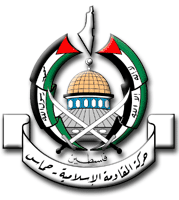Der unvergleichliche Bradley Burston nimmt in Haaretz die Aufregung um Jimmy Carters Hamas-Diplomatie zum Anlass, ein paar Worte an „unseren schlimmsten Feind“ zu richten. Darunter versteht er nicht Iran, sondern eben die Hamas. Und nur Hamas, schreibt er, hat als schlimmster Feind auch den Schlüssel zur Lösung des Konflikts in der Hand. Hamas und Israel, schreibt er weiter, sind sich in entscheidenden Punkten ähnlich. Vor allem in ihren jeweiligen Lebenslügen.
Und er erklärt nebenbei noch, um was es eigentlich in diesem Stadium des Nahostkonflikts geht: defensible borders – Grenzen, die man verteidigen kann. Klingt einfach, ja banal, ist aber das Schwierigste. Denn dem stehen die Siedler entgegen – und Hamas‘ Weigerung, Israel anzuerkennen:
„You are our worst enemy because, apart from us, you are the only party with the strength and the capability to forge a solution to the conflict and because – like us – you cannot bring yourselves to decide what you really want, what you’re willing to do about it, nor roll over and go out of business as a result.
You are our worst enemy because you face many of the same problems that we do.
You want to find a solution for huge numbers of people who view pre-1967 Israel as their rightful home.

Die Abbildung zeigt das Hamas-Logo. Oben sieht man das Territorium, das Hamas beansprucht: ganz Israel, inklusive Westbank und Gaza als Groß-Palästina. An diesem Logo müßte man dringend arbeiten, wenn es einen Friedensvertrag jemals geben soll.
We want to find a solution for huge numbers of people who view post-1967 territories as their rightful home.
Neither of wants to tell these people what we know in our hearts to be true – that the fervent beliefs in a Jewish Greater Israel and an Islamic Palestine are unrealizable.
…
I understand that after 60 years of grief and longing – to say nothing of Arafat’s lies about millions of Palestinian potential shahidim, presumably many of them refugees, marching on Jerusalem – offering refugees and their descendants something less than a return is an impossible sell.
In the long run, though, it’s one that you’ll have to find a way to make. Just as we’re likely to have to someday move tens and tens of thousands of settlers out of the homes.
Why, you may ask, do we not go ahead and do it now, force these people to move, return to 1967 lines?
I have two words for our worst enemy: defensible borders.
That, at root, is what Israelis want. Not the east Jerusalem Palestinian villages annexed to the city, not the settlements, not the suffering of the Palestinian people.
The fact is, our settlers have abandoned trying to sell Israelis the idea that the settlements are good for them. Now, all they really have to sell, is the concept that Qassams are bad for them.
Since the disengagement from Gaza, this has become a given for Israelis, even most of those who long supported the cause of an independent Palestine in the territories.
For Israelis, you, as our worst enemy, have reduced defensible borders to the bedrock issue.
What’s it going to take for both sides, both enemies, to get to the point where the 1967 lines become defensible borders?
You’re not going to like this. But you might turn out to be better at this than we are.
In the Middle East, peace is made by individuals willing to be the true shahid, the person who is willing to become a sacrifice to the cause of creating a future for two peoples, leaders who are willing to become in a literal sense a martyr for peace.
Anwar Sadat and Yitzhak Rabin were such, as were lesser know but no less heroic people like Issam Sartawi and Emil Grunzweig, people killed by extremists on their own side, for the crime of having worked for reconciliation.
Yasser Arafat, who said he was our friend, repeatedly spoke of the peace of the brave, but lacked the courage to become that martyr for his people.
In the end, I have much more faith in the courage of the worst of our enemies.



